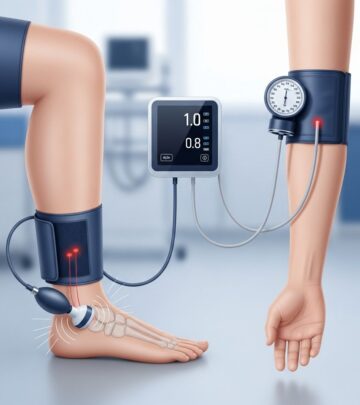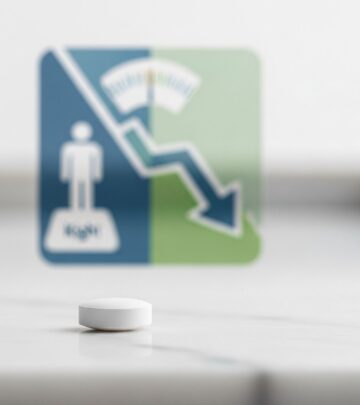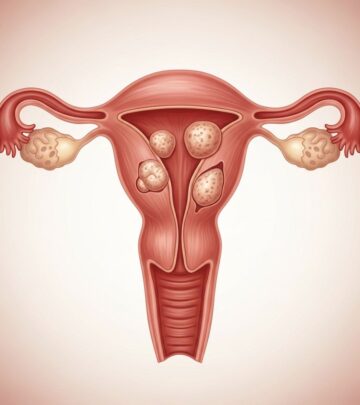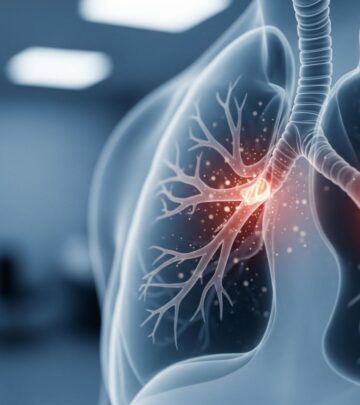Plantar Warts: Understanding Symptoms, Causes, Treatment, and Prevention
Explore the causes, signs, risk factors, diagnosis, and management options to help prevent and treat plantar warts effectively.
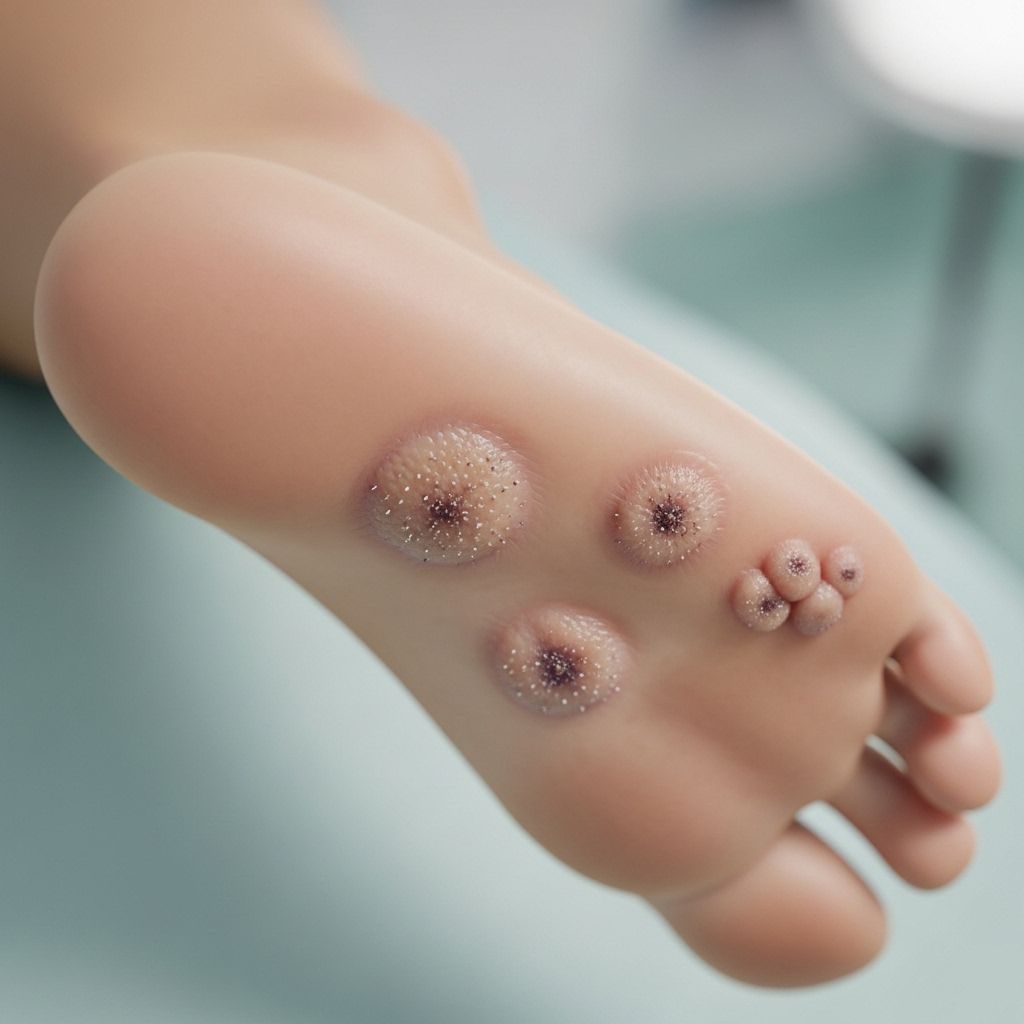
Plantar Warts: Symptoms, Causes, Treatment, and Prevention
Plantar warts are common skin growths that appear on the soles of the feet. Although often harmless, these growths can cause discomfort, especially when located on weight-bearing areas like the heel or ball of the foot. Understanding their causes, symptoms, risk factors, and treatment options is key for effective management and prevention.
What Are Plantar Warts?
Plantar warts are small, grainy growths that typically form on the pressure points of the foot, such as the heels or the balls. Unlike warts that develop on other areas of the body, plantar warts grow inward due to the pressure from walking or standing. These warts are caused by infection with specific strains of the human papillomavirus (HPV), which enters the skin through tiny cuts or breaks in the foot’s surface.*
Symptoms and Signs
The appearance and feel of plantar warts can vary by individual, but the following are common characteristics:
- Small, fleshy, rough growths on the bottom of the foot, usually with a clear boundary from surrounding skin.
- Hard, thickened skin (callus) over a well-defined spot where the wart has grown inward under pressure.
- Black pinpoints (“wart seeds”)—which are actually small, clotted blood vessels inside the wart.
- Pain or tenderness when walking or standing, caused by pressure on the wart.
- Lesions may disrupt the normal ridges or lines in the skin of the foot.
- Warts may appear singly or in clusters (sometimes called mosaic warts).
Plantar warts can sometimes be mistaken for other skin conditions, such as corns or calluses, but can usually be differentiated by the presence of the small black dots and the pain experienced when pinched from the sides, rather than when pressed from the top.*
When to Seek Medical Advice
- You are uncertain if the growth on your foot is a wart, especially if it’s changing in appearance or color.
- The lesion is painful, bleeding, or showing signs of infection.
- Warts persist, multiply, or recur after treatment.
- You have a weakened immune system due to a medical condition (such as diabetes, HIV/AIDS, or use of immunosuppressive drugs).
- You have poor sensation in your feet, for instance due to neuropathy or diabetes.
Causes of Plantar Warts
Plantar warts are caused by infection with certain types of human papillomavirus (HPV).
Key facts about HPV and plantar warts include:
- HPV thrives in warm, moist environments such as locker room floors, communal showers, and public swimming pools.
- The virus enters through tiny cuts, cracks, or breaks in the skin on the feet.
- Direct contact with surfaces contaminated with the virus or skin-to-skin contact with someone who has a wart increases risk.
- HPV causing plantar warts is not the same as the types that cause genital warts.
Not everyone who comes in contact with the virus develops plantar warts. Factors influencing susceptibility include the body’s immune response, presence of skin breaks, and frequency of exposure.
Risk Factors
While anyone can develop plantar warts, certain groups are more susceptible:
- Children and teenagers, due to frequent barefoot activity and developing immune defenses.
- People with weakened immune systems, including those with immune disorders or on immunosuppressive therapy.
- Individuals with a history of atopic dermatitis (eczema), as their skin barrier may be compromised.
- Frequent users of communal showers, swimming pools, gyms, or locker rooms.
- Those with injuries or cracks on the soles of their feet.
Prevention
Though not always possible to completely avoid plantar warts, these preventive measures can substantially reduce risk:
- Wear footwear (sandals or shower shoes) in communal showers, gym locker rooms, and around public pools.
- Keep feet clean and dry. Change socks daily and allow shoes to air dry.
- Avoid direct contact with warts, either on yourself or another person. Do not share towels, shoes, or socks.
- Cover existing warts with an adhesive bandage to prevent spreading the virus.
- Clean and disinfect surfaces and shower areas regularly.
- Do not touch, scratch, or pick at warts to avoid spreading the infection to other parts of the body or to others.
Complications
Although most plantar warts are benign, complications can include:
- Pain and discomfort when walking or standing, sometimes interfering with daily activities.
- The development of clustered wart formations called mosaic warts, which can be particularly difficult to treat.
- Virus spread—either new warts on the same foot, other areas of the body, or to other people.
- Rarely, bacterial infection of the wart or surrounding tissue, especially if the skin is broken from scratching or picking.
Diagnosis
A diagnosis of plantar warts is typically made clinically by examining the affected area. Health care professionals look for:
- The presence of a small, rough, fleshy growth interrupting the normal lines of the skin.
- Small, dark pinpoints within the lesion (clotted blood vessels).
- Localized pain or tenderness when the growth is pinched from the sides.
Sometimes, the following methods may be used to confirm diagnosis or rule out other skin problems:
- Trimming away the thickened skin to reveal pinpoint bleeding (capillaries) beneath.
- Cutting away a small section of the wart (shave biopsy) for laboratory analysis in uncertain cases.
Specialist referral (to a dermatologist or podiatrist) may be recommended for persistent, atypical, or unclear cases, or for patients with complicating health conditions.
Treatment Options
Most plantar warts are harmless and often resolve naturally without treatment, particularly in children. However, some warts persist or cause significant discomfort and may require intervention. Treatment aims to remove visible lesions, relieve symptoms, and minimize recurrence or spread.
Over-the-Counter Treatments
- Salicylic acid preparations (liquid, gel, pad, or ointment) help remove layers of the wart slowly. Consistent application over weeks can be effective.
- Duct tape occlusion therapy—sealing the wart with duct tape for several days, removing the tape, then gently scraping dead tissue and repeating—may help in some cases.
Medical Procedures
Consult your healthcare provider if over-the-counter products are ineffective or if the wart is particularly painful, recurrent, or spreading. Professional treatments include:
- Cryotherapy (freezing)—Liquid nitrogen is applied to freeze the wart, causing it to eventually fall off. Multiple sessions may be necessary.
- Prescription-strength salicylic acid—Stronger than OTC versions, typically applied in-office or at home under guidance.
- Laser therapy—Intense light beams destroy wart tissue. This option is considered for resistant or cluster (mosaic) warts.
- Electrocautery—Burning off the wart tissue using electrical current.
- Minor surgical excision—Physically removing the wart under local anesthesia.
- Immunotherapy—Medications or topical treatments designed to stimulate the body’s immune system to combat the HPV infection.
Doctors will consider your overall health, medical history, and the severity or persistence of the wart before recommending a particular treatment.
Table: Common Treatment Methods and Considerations
| Treatment Method | How It Works | Duration | Possible Side Effects |
|---|---|---|---|
| Salicylic Acid | Softens and peels layers of wart tissue | Several weeks to months | Skin irritation, peeling, discomfort |
| Duct Tape | Occludes and macerates wart tissue | 6–8 weeks | Skin redness, irritation |
| Cryotherapy | Freezes and destroys wart tissue | Every 2–3 weeks, may require multiple sessions | Pain, blistering, skin color changes |
| Laser Therapy | Destroys blood vessels feeding wart | Varies; often after other treatments fail | Pain, scarring |
| Minor Surgical Removal | Cuts out the wart under local anesthesia | Usually a single procedure | Pain, scarring, risk of recurrence |
| Immunotherapy | Stimulates immune response | Several weeks to months | Redness, swelling, allergic reactions |
Recovery and Outlook
Most plantar warts will eventually resolve on their own as the immune system eliminates the virus. In children, this process may take a year or two, while in adults it can take longer. Medical intervention can significantly shorten recovery time and reduce discomfort. Recurrences are possible, especially if underlying predisposing factors (such as frequent exposure to communal wet environments) persist.
Frequently Asked Questions (FAQs)
How are plantar warts different from corns or calluses?
Plantar warts are viral-induced growths characterized by clotted blood vessels (black dots) and disruption of skin lines, while corns and calluses develop from pressure or friction and do not contain black dots or disturb skin lines.
Can plantar warts spread to other people?
Yes. Plantar warts are contagious, primarily through direct or indirect contact with infected skin or surfaces. Avoid sharing towels, socks, or shoes and use protective footwear in communal spaces.
Are plantar warts dangerous?
In most cases, plantar warts are not a serious health threat and resolve without treatment. However, individuals with weakened immune systems or certain health conditions should be vigilant for complications or recurrence.
What if over-the-counter treatments fail?
Persistent, painful, or spreading warts should be evaluated by a healthcare provider, who can recommend prescription-strength treatments or procedures.
How can I reduce the risk of getting plantar warts again?
Prevention includes maintaining good foot hygiene, not sharing personal items, wearing footwear in communal areas, and treating existing warts promptly to avoid spread.
Summary
Plantar warts are common, generally harmless viral skin growths with a characteristic appearance and symptom profile. Most cases resolve through self-care and time, but persistent or troublesome warts may need medical intervention. Combining active prevention with prompt and appropriate treatment can minimize discomfort and prevent recurrence.
Read full bio of Sneha Tete

